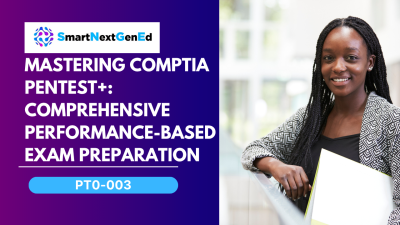Mastering CompTIA PenTest+ (PT0-003): Comprehensive Performance-Based Exam Preparation
This course prepares experienced IT professionals for the CompTIA PenTest+ certification, focusing on penetration testing skills such as planning, information g...


 bigoss
bigoss
 English
English
 Certificate Course
Certificate Course
 99+ Students
99+ Students
 17h 35m
17h 35m
 1 Student
1 Student
 32 Courses
32 Courses
 0 Review
0 Review

 Buy Now
Buy Now


